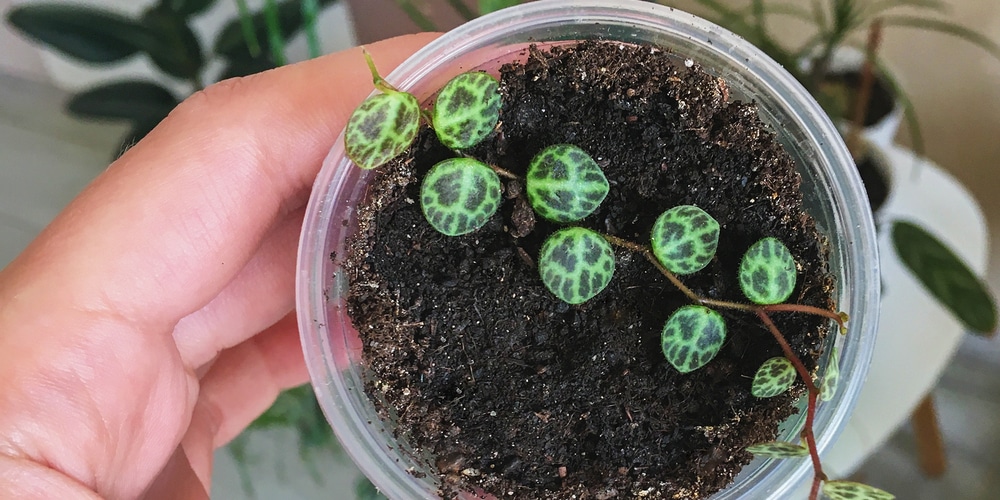The String of Turtles plant is a uniquely beautiful succulent that’s easy to care for. You can propagate this plant by taking either a leaf or a stem cutting from a larger plant. Cuttings can be either placed in water or soil to grow roots.
It’s fascinating to watch these plants grow as they have long trailing vines and add small rosettes that look like turtle shells one at a time. They grow slowly but steadily if kept in bright light and watered when the soil dries out. Let’s look at how to propagate a string of turtles’ succulent.
Propagating with a stem cutting
String of Turtles are an easy-to-propagate succulent, for best results, propagate during the spring or summer months when your plant will put on more new growth. Here’s how to propagate a String of Turtles using leaf cuttings. First, you need a large enough String of Turtles to take cuttings from. If you don’t have your own plant, you can ask a friend or neighbor for a cutting. Only propagate from mature plants that are well developed.
1. Take a Cutting
When taking a cutting from a string of turtles, it’s always best to use fresh, healthy leaves. Avoid using old, dried-out, or damaged leaves because they’re more likely to break off before rooting. Always use a sterilized knife or pair of scissors when taking cuttings; this will mean that bacteria isn’t spread to your plant. Make several stem cuttings about 5 to 7 inches long.
2. Remove the leaves
The next step is removing some of the leaves from the cutting. Remove a few leaves from when you made the cut so that you can plant the stem. Leave the lower leaves on the cutting.
3. Let the roots grow
Its best to take more than one cutting as this will give you a greater chance of success. Before planting your string of turtles in soil, you’ll need to encourage root growth. Put the stem in a glass of water or lay them between two wet paper towels until they had roots growing.
4. Plant your string of turtles
In order to propagate your string of turtles cutting should have developed roots within a few days to a few weeks. You may even like to leave the plant in water for 2 or 3 months until a good root system has developed. Once your plant has roots you can plant it in some moist potting soil.
5. Look after your new plant
Once you’ve potted your new cutting, place it in an area of your home that has bright indirect light and keep the soil moist. Baby succulents require slightly more water than mature plants, so don’t let your succulent dry out. Be careful not to overwater as root rot can occur. Always test the plant’s soil before watering, and don’t let the earth get soggy.
After a few months, your new string of turtles plant will have established itself and can be cared for in the same way as any succulent.
Propagating with a Leaf
String of turtle plants can also be propagated using a single leaf. Follow these simple steps to propagate a string of turtles using a leaf cutting.
1. Choose and remove some leaves
Simply remove a leaf from the steam using a sterilized knife or scissors. Be very gentle when removing leaves; you may like to choose a few healthy leaves rather than a leaf that has fallen off by itself, although these do sometimes grow.
2. Let the leaves callose over
Once you have your leaves, you can put some soil in a pot. Lean the leaves against the edge of the pot and leave them to callose over. This is likely to take two or three days.
3. Place the leave on moist soil
Once the edge of the leaf looks like it has callused over on the cut edge, you can lean it against the soil. Moisten the ground and keep it wet until roots and new shoots form on the leaf. Leave the pot in a well-lit area, but on in the full sun. It will generally take about a month for new growth to develop and for the roots to grow and establish the plant.
Conclusion
String of turtle succulents are relatively easy to care for and can be propagated using either a cutting or a single leaf. There are various propagation methods that use either water or soil to encourage roots to grow. Most people find that they are successful when propagating these plants. It’s best to propagate plants in the spring or summer during the period of active growth.

